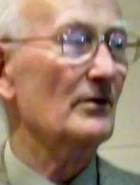Cúchulainn's Sons Poem by Matt Mooney
Cúchulainn's Sons
In the annals of Cúchulainn’s sons
Appear the names of our ancestors;
Time of Land League, landlords and evictions:
When our Gaelic Games were spawned
While we waited for the dawn of freedom;
Floating on a tide of national pride
From the nineteenth to the twentieth century.
Barefoot players on pitches improvised,
Tournaments and marching bands
Of brass and reed and fife and drum:
The baronies hurling the troubled years away
With camáns shaped like camógs;
The flying sliotar a harbinger of peace
Sending shivers down the spine of time,
Raising up our ancient race
To feel again our rightful nationhood;
Running on – this fever in the blood,
Leaving to posterity dexterity and style-
Present on the field of play today
In the genes of great grand children:
As accurate in every game
In their aim from centre field or side line cut,
And we cheer them from the stands
For they are Cúchulainn’s youngest sons.
(Cúchulainn (Culainn's hound) or Setanta was a legendary hurling hero in Irish mythology. Hurling is one of our Gaelic games, over 2000 years old but revived by the Gaelic Athletic Association founded in 1884. It is played with hurleys and a small ball or sliotar in a match of 15 a side lasting 70 minutes. The ball can be struck in the air or on the ground. One goal is equal to three points. Points are scored over the crossbar. The hurley or camán is made from the ash tree and is shaped like a camóg (rough walking stick) or hockey stick but with a wider striking area. The ball is made from cork covered with ridged leather. Croke Park is the HQ of the GAA and the Hurling Final is always played there on the first Sunday in September.)
This poem has not been translated into any other language yet.
I would like to translate this poem